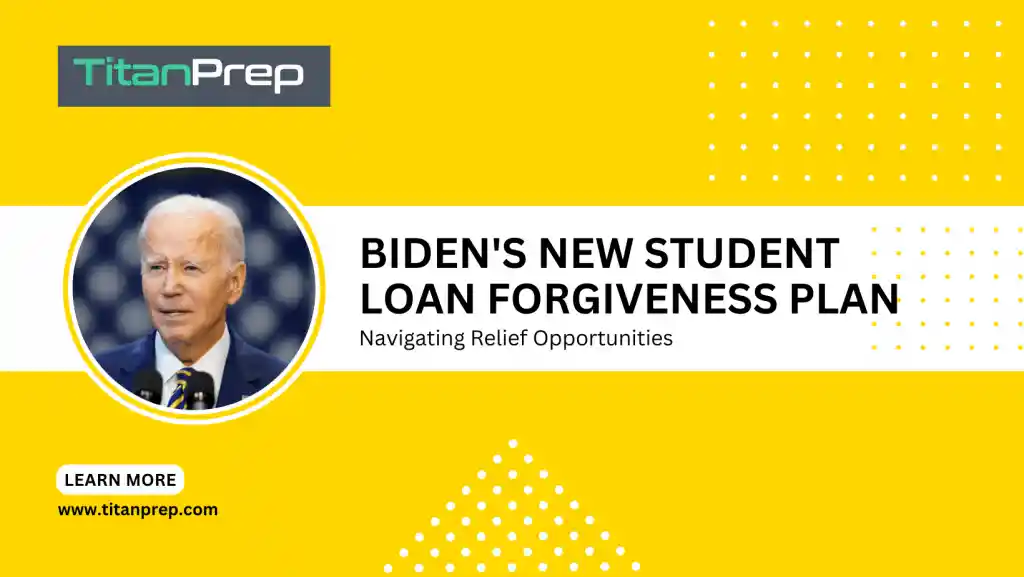Biden's New Student Loan Forgiveness Plan: Relief Opportunities
The Biden administration’s new student loan forgiveness program, which aims to bridge the gap created by the Supreme Court’s rejection of the original debt relief plan, has been fully disclosed by the Education Department. Borrowers are keen to learn about the nuances of this “Plan B” and how it might change their path to debt relief as the rulemaking process progresses.
The Evolution of Student Loan Forgiveness Plans
From HEROES Act to Higher Education Act
The Supreme Court reversed the Biden administration’s initial attempt at student loan forgiveness, posing a challenge. The administration is now turning its focus to the Higher Education Act, a calculated step that offers a formal way to amend federal student loans.
Rulemaking Process Underway
The Higher Education Act requires a rulemaking process, in contrast to the HEROES Act. A committee has been formed to discuss and create guidelines for the new forgiveness plan, taking into account the criticisms made by the Supreme Court.
Identifying Borrower Groups for Relief
Four Primary Borrower Groups
The Education Department has released draft regulatory text detailing the four main groups eligible for student loan forgiveness ahead of the next rulemaking committee meeting:

1. Balances Exceeding the Original Loan
borrowers whose federal student loan balances have significantly increased as a result of capitalization, interest accrual, or disproportionate fees from previous defaults.
2. Repayment for a Minimum of 25 Years
People whose loans were first due 25 years or more ago may not be eligible for immediate forgiveness under current programs.
3. Participants in Career-Training Programs
borrowers from career-training programs who have excessive debt or inadequate income, as well as students enrolled in universities with high rates of student loan default.
4. Current Plan Eligible Individuals Who Have Not Applied
Borrowers eligible for existing forgiveness plans but have not yet applied for relief.
A Possible Fifth Unit
The Education Department is thinking of expanding the forgiveness plan to include borrowers who are experiencing financial difficulties that the current system does not sufficiently address as a fifth group. The specific standards for this category are still being developed.

Recognizing Relief Category
Partial or Total Absolution
Depending on their situation, borrowers who fit into these categories may be eligible for either full or partial forgiveness of their federal student loans. The possibility of offering automatic relief in the absence of a formal application process is also being investigated by the Education Department.
Insights from Secretary of Education
Dedication to the Welfare of Borrowers
Miguel Cardona, the secretary of education, emphasized the need to offer opportunities free from the weight of excessive debt while reiterating the administration’s commitment to fixing the problems with the student loan system.
Future Negotiated Rulemaking Conference
On November 6 and 7, the rulemaking committee is scheduled to meet in order to deliberate over the draft regulatory text and further explore the parameters that will apply to borrowers who are experiencing financial difficulties.
Possibility of Early Application
Although the revised forgiveness plan is expected to be completed and made available by July 2025, the Biden administration may decide to use the Higher Education Act’s early implementation authority as early as 2024.
In summary
Borrowers anxiously anticipate the new student loan forgiveness plan’s finalization as the Education Department works through the rulemaking process. For those who are struggling with student loan debt, there is some hope because relief is possible for a variety of borrower groups. Through maintaining awareness and engaging in public discussions, borrowers can help to create a higher education environment that is more accessible and equitable.

FAQ's:
Q1: Can borrowers benefit from the new forgiveness plan regardless of their background?
Yes, the plan aims to provide relief based on specified criteria and targets a variety of borrower groups.
Q2: How do borrowers experiencing financial difficulties apply for the program?
The Education Department is in the process of formulating precise standards for identifying borrowers who are facing financial difficulties. The rulemaking process will lead to the refinement of details.
Q3: Will private student loans be covered by the forgiveness plan?
The main topic of discussion is federal student loans. On the other hand, the Education Department is looking into solutions for the problems that borrowers of private loans encounter.
Q4: During this transition, are there going to be any changes made to the current forgiveness programs?
Offering relief to individuals who might have been excluded or who haven’t applied yet, the new forgiveness plan seeks to supplement current initiatives.
Q5: How can debtors actively influence the design of the new forgiveness scheme??
One way that borrowers can help is by keeping themselves updated, offering input at public hearings, and sending in written comments when the proposed regulations are released the following year.

